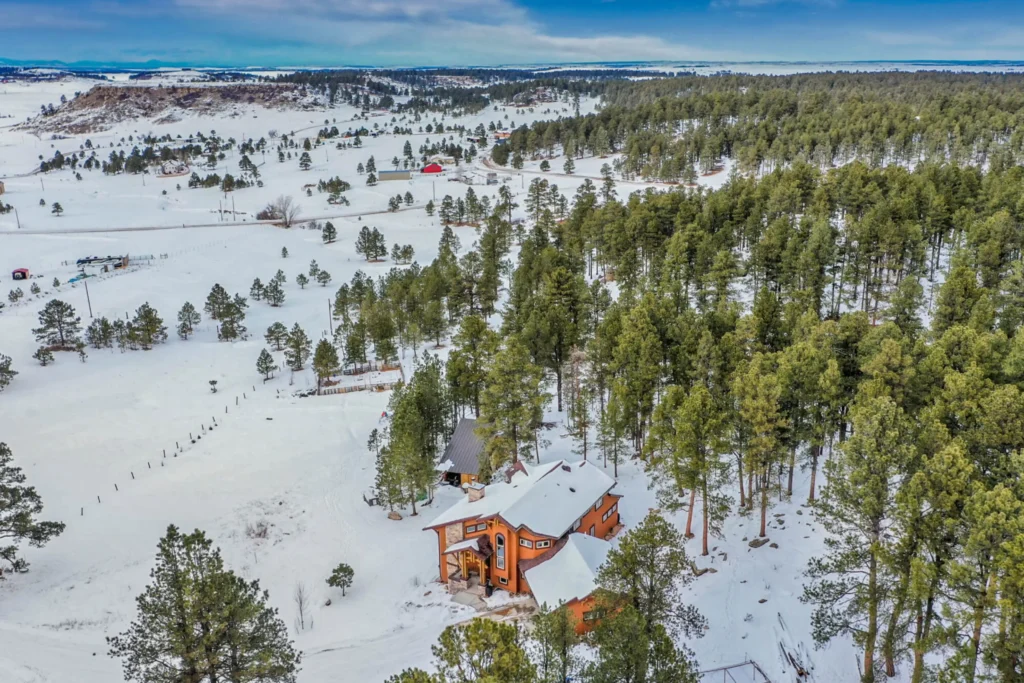There’s so much to love about high-elevation areas like Colorado.
This region features the Rocky Mountains, breathtaking views, and forests.
These aspects make living here worthwhile Despite all these things to love, the high elevations of this area present a couple of challenges to homeowners.
High-elevation areas such as Colorado often experience extreme temperatures, high winds, excessive snowfalls during winter, and intense exposure to UV especially during summer.
These conditions have the potential to cause immense wear and tear to houses, necessitating the need for weather-proofing.
This article looks at different ways to weather-proof your mountain home in order to protect against the elements.
Select the Right Materials

Are You Looking To Build A Home In The Mountains?
Since mountain areas experience harsh weather conditions, it’s important that you use materials able to withstand the tough weather. The reasoning for this is that wear and tear happens quite fast in these regions, emphasizing the importance of durable materials.
For your exterior siding, use a material able to withstand different things. Some can be extreme temperatures, moisture, and pests. Examples of materials for such include natural stone, fiber cement, and engineered wood. As for your roof, consider choosing a durable metal roof. This one will have the capability to withstand heavy snow loads. One material that has been proven to offer this is composite shingles.
Snow and Ice Management
At very high elevations like 9,000 feet, expect to experience snow and ice buildup on your property. Therefore, you need to make your home ready to manage this situation.
A good solution for snow and ice is to have a steeply pitched roof. It prevents excess buildup of snow on your roof. You may also want to install snow retention systems to assist with controlling slide-offs, especially close to walkways and entryways.
If you have the budget for it, you could even go a step further and install heated driveways and walkways. These assist with melting off the ice and snow, keeping specific areas of your home clear and safe to use.
Insulate Your Home Perfectly
High-elevation areas undergo very cold winters and hot summers. To prevent this, insulate your home perfectly. This helps keep heat inside during winter and heat outside during summer.
One way to insulate is air sealing. Seal gaps that could allow air from the outside to the inside. Open spots can exist around windows, doors, or utility penetrations. Therefore, consider inspecting these areas and sealing those available spaces.
Waterproof Your Home
We cannot talk about weatherproofing without talking about waterproofing your house. The heavy rainfall experienced in this area plus extreme snowmelt are all likely to cause moisture problems like mold, rot, and foundation damage.
Sloped landscaping is one technique that you can implement here to direct water away from your home. This helps minimize the risk of erosion and flooding. You can also go the extra mile and do basement or crawlspace waterproofing to keep the lower parts of your house dry during times of heavy rainfall. Going back to the exterior, consider having durable exterior finishing by making use of treated wood or waterproof membranes to help prevent moisture infiltration.
Install Wind Resistance
Mountainous areas such as Colorado experience extreme winds, which have the potential to damage poorly built structures. As a homeowner, this is something you don’t want to happen to you, a major reason to incorporate wind-resistant features in your construction.
A good idea that can really assist is having an aerodynamic design for your roof. By placing your roof strategically, you can be able to minimize wind resistance and prevent damage to your roof. You should also consider reinforced framing, which entails adding extra features such as hurricane straps, engineered shear walls, and heavy-duty fasteners to strengthen the frame of your house. Having these features on your house can help to protect it against extreme winds.
High-elevation regions like Colorado experience harsh weather conditions. Although building here is a dream for many, it will present you with a couple of challenges that you have to fix. Weather-proofing your home using the aforementioned techniques such as using durable materials, managing snow and ice perfectly, installing wind resistance, and waterproofing can help protect your home against wear and tear caused by the elements.
To be able to properly weather-proof your home, you will need the assistance of professionals. At Colorado Mountain Builders, we are experienced in building high-altitude homes. You can therefore trust us to deliver when looking for a house that is made to last in Colorado.
